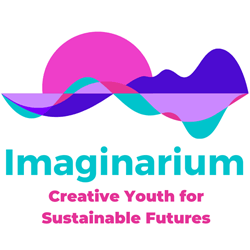One of the best lessons comes from making mistakes. This is why here you will find a few examples of incorrect assumptions that may accompany creative work. One of these being: ‘That young people can be creative in any situation, and will always go into a brainstorming session with ease.’ Assumptions are very difficult to avoid – we know that from our own experience. Luckily there is plenty of space for learning and growing.
1. “All we need is open minded young people”
Actually, that would not be enough.
Imagine this: Together with a group of young, open minded people you have a creative task to do: Maybe this is about a positive future, maybe about designing a sustainable city they would like to live in. The group of you are sitting in a room with no window, just artificial lighting. The walls are painted gray with one rather sad motivational picture hung up and there are some tables and uncomfortable chairs. Everything is positioned in straight rows with no real option to rearrange them. Finally, it’s just a little too cold, you’re hungry and tired because it’s after a full day of work and there’s nothing around to help you with those needs. There are other people there, but you don’t know each other very well.
Now, how do you feel about working, much less being creative, in such conditions? It’s almost impossible. The door to imagination is unlocked when you’re feeling at least ok with yourself, and it is wide open when your surroundings are in full support of the effort too.
Find out more how to ensure your space and conditions support creativity: Room, Facilities
2. “Let’s be creative and run wild with our imagination… annnd GO! ”
Creativity is not an ‘on demand’ endeavor, unless you’ve carefully, over time, cultivated a routine. And even these routines are flexible. The triggers needed to jumpstart creativity are extremely individual. Moreover creativity needs to be fed and nurtured.
Creativity isn’t normally about creating something completely new. It’s more often about finding a new approach to existing ideas. To develop these new interpretations, you first have to know and understand what already exists and what others are doing. You need to get inspired.
With this in mind, before any creativity session, it’s good to give a group a time to think, reflect and discuss an issue they would like to work on. It’s very important to let THEM find out more, search the internet, listen to stories, and watch videos. Imagination does not exist in vacuum, it develops thanks to experiences and observation (even fictional ones while reading a book for example), and is based on memories. This exploration needs time, freedom, joy and a relaxed atmosphere.
If you moderate a brainstorming session with a group of young people you can, though, share examples of ideas, especially ‘extreme’ or ‘crazy’ ones. This gives them a framework to build on regarding the results you expect.
More ideas for boosting creativity can be found here: How to stimulate group creativity
3. “Your idea isn’t going to fly. And it’s not that I’m being judgy, I’m just being realistic.”
One of the most destructive motivation and idea killer 🙂
It happens all the time. Even when people know the basic brainstorming rule: ‘There are no bad ideas, they can’t avoid judging’. The language we choose is of great importance in a brainstorming session. Commenting on someone’s idea in a careless, negative way is so discouraging. We can be unconsciously and consciously attached to the ideas we come up with. Especially young people, who tend to take it personally, could withdraw from open discussion after carelessly given negative feedback.
Before brainstorming sessions it’s recommended to conduct short exercises or simple discussions. Give examples of concrete phrases that can limit creativity and allow the group to discuss the subject.. Some examples of these phrases can be found here:
4. “Creative people don’t fail”
The truth is quite the opposite and it’s kind of a good thing to fail. Innovators experience failure all the time, the point is that they are ready for it and are not afraid of the lessons it teaches. There is a beautiful story about Thomas Alva Edison, who was attempting to improve the light bulb. He spent more than two years experimenting with different kinds of materials – bamboo shoots, animal hair, spider webs, copper etc. Over a thousand times he experimented, to discover a material that would provide a long lasting light. And the world was watching his progress with curiosity. One day a reporter came to interview Edison: “It seems as though you’ve tried and tried to invent the incandescent light bulb and continue to fail each time. Why is that?” Edison’s answer is the best lesson for innovators: “I have not failed. I’ve just found ten thousand ways that won’t work.”
“Brainstorming Managers”
Effective brainstorming needs democracy. Moderators should behave more like process facilitators than managers. This means ensuring that everyone has an opportunity to speak and has the tools to share those ideas and contribute. This simple rule is crucial if we want everybody to participate in creative exercises actively.






